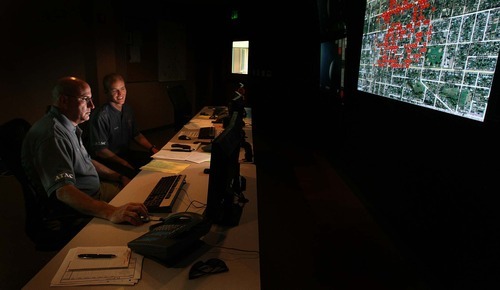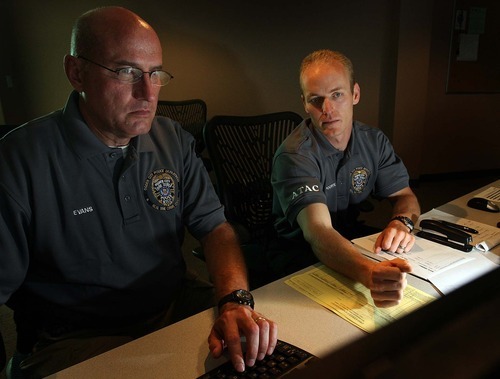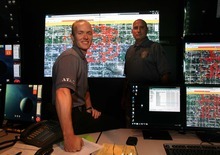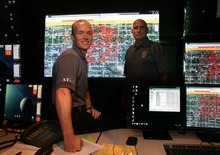This is an archived article that was published on sltrib.com in 2011, and information in the article may be outdated. It is provided only for personal research purposes and may not be reprinted.
The Ogden Police Department has built a new "real-time crime center" that allows officers to instantaneously view live video feeds of some 200 surveillance cameras pointed all over city-owned property.
And this could be just the beginning. Officials want to use the new high-tech system to access other video cameras as well, including at train stations and private businesses.
Is this the ultimate in law enforcement protection or a chilling vision of Big Brother as envisioned by George Orwell's 1984?
Ogden police Chief Jon J. Greiner promises that he and his officers won't cross "that line of privacy." "We're certainly not interested in putting one [cameras] in your neighborhood," Greiner said. "But we have an interest in protecting city property. As a taxpayer, I don't think we have to pay for a person's uncivil behavior."
The new crime center is located at the Ogden City Public Safety Building, 2186 Lincoln, and it works to integrate criminal and other databases as well as surveillance-camera video feeds, making all that data accessible in one place. The center includes new computer systems and software, paid for through Ogden's internal budget. A ribbon cutting will be held Tuesday between 2 and 4 p.m.
One purpose of the center is to give officers in the field instant access to relevant information about a crime call, such as the criminal history at an address or information about the caller and any suspects, said Ogden crime analyst Dave Weloth, director of the center. Not only can officers receive data before they pull up to a scene, but they can continually be fed information after they arrive.
"We're sitting in the crime center and we have access to a lot of different resources," he said. "The investigation can start immediately, instead of the next day."
The second main feature of the new center is the ability to access the live video feeds of city-owned surveillance cameras peppered throughout Ogden, such as at Municipal Park, along various hiking trail heads, and in the municipal offices and parking lots.
Weloth said they also hope to gain access to the security cameras from other government buildings, including the Internal Revenue Service, Weber County offices, at banks and Utah Transit Authority train stations.
But "that's harder to do," said Ogden Assistant Police Chief Randy Watt. "The technology to convert those signals from a wide variety of different systems — the ability to translate that signal and use it in our center — is the problem we have with existing cameras."
There are nine other police jurisdictions, including New York City and Memphis, that have similar crime centers, Watt said, while Ogden's is the first in Utah. Sandy police have been working with UTA to get access to video feeds once security cameras are installed at local train stations.
In addition to its crime center, Ogden police also are working with Weber State University's Utah Center for Aeronautical Innovation and Design to develop a blimp equipped with cameras that would fly over the city for extended periods. That project is still being worked on as Ogden police try to clear hurdles with the Federal Aviation Administration, Greiner said.
With all of these electronic eyes pointed at Ogden residents below, critics are wondering if that is taking law enforcement too far.
"The biggest problem with cameras all over a city is that it erodes this fundamental freedom people have that you can be anonymous in public places without feeling that some arm of the government is watching you," said Marina Lowe, legislative and policy counsel for the American Civil Liberties Union of Utah. "For example, to go to a political rally and not feel like you're being tracked."
Legally, Ogden has the right to monitor city-owned property, Lowe admits, because there's a reasonable expectation of no privacy in public places. But Lowe said the center's surveillance cameras raise a variety of questions, such as who will be monitoring them and whether there will be oversight over the system. And she wonders whether such surveillance systems are effective at mitigating crime in the first place.
A 2005 Home Office study of cameras in England (the immigration and security arm of the English government), which uses more surveillance cameras than any country, showed that such video monitoring had "no overall effects" on crime rates.
And a 2008 study from the University of Southern California that considered the use of security cameras in two areas of Los Angeles showed no "statistically significant effect in reducing the overall monthly crime rates."
"As Americans, we should ask at what cost are we putting up these cameras," Lowe said.









